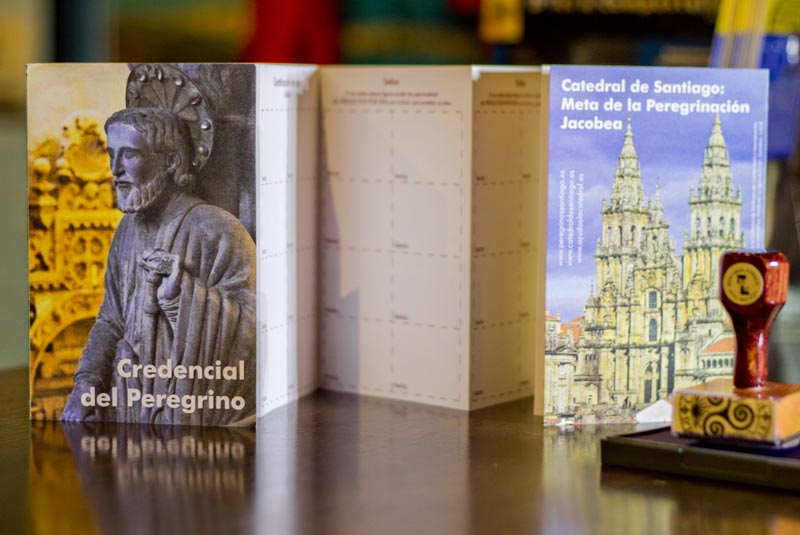Olivares
Veteran Member
- Time of past OR future Camino
- May 1997 (Leon to Santiago); Sections Camino Frances: May 2011, May 2012, May 2013, October 2013, June-July 2014 (Sahagun to Santiago).
Regarding the Manifesto—first thing I love about it is the fact that it aims to preserve Elias Valina’s legacy. This man should be canonized if you ask me.
THE CREDENTIAL
1. Wholeheartedly agree with the concept of ONE OFFICIAL CREDENTIAL. Much like a country passport, there should ONE issuing organization (i.e. the Fraternity).
2. A prospective pilgrim must fill out a form to obtain this credential. This form will have a list of rights & responsibilities. Once the Pilgrim signs it and sends it, it is the only way to obtain this one official credential. A processing fee is involved to cover mailing costs.
3. Pilgrims with the Official credential get priority at albergues. Simple as that.
THE COMPOSTELA
1. Minimum Required distance: LEON TO SANTIAGO. Otherwise, ALL Compostelas are “watered down” by the fact that they all look the same whether you start in SJPDP, Le Puy, Lourdes, or Sarria.
CAMINO TRAIL PRESERVATION
1. Try to find an open church along the Camino; not easy quite often. If the Fraternity wants to preserve the concept of pilgrimage, this has got to improve.
2. Identify a list of places along the Camino with frequent noted violations; garbage, graffiti, vandalized markers, etc… Focus on physical enforcement on those areas by either creating local departments for protection of the Camino by local volunteers, local police, parishioners, etc.
TOURISM AND THE PILGRIMAGE
The Camino de Santiago was designated UNESCO Patrimony of Humanity in 1987. This distinction was granted because of the Camino's HISTORICAL significance and unifying role in cultural exchanges between European cultures since the Middle Ages (and global in recent times). So, since it is a Patrimony of Humanity, I see absolutely nothing wrong if a TOURIST wants to walk the Camino. I actually think that many TOURISTS honor the Camino in many ways better than many of those who get on their high horses and make snide comments to passing walkers, critize, or set out to set others “straight” by calling themselves “True Pilgrims”. If the Fraternity want to build respect for traditional Pilgrimage values start by encouraging local churches to have them open more often, longer hours, places to go in and meditate, if the locals municipalities treat the Camino like just another nature trail, why should visitors treat it any differently?
HOSPITALITY
1. Agree wholeheartedly with limiting the use of “Albergue” designation to those non-for profit. Many private albergues are as, or more, expensive than a hostal. Misleading.
It is noted that once in Galicia, the amount of cars going up and down the trail handing out flyers with addresses and prices for albergues was disturbing and at times, flat out unsafe. Worse place: Palas dei Rei.
THE CREDENTIAL
1. Wholeheartedly agree with the concept of ONE OFFICIAL CREDENTIAL. Much like a country passport, there should ONE issuing organization (i.e. the Fraternity).
2. A prospective pilgrim must fill out a form to obtain this credential. This form will have a list of rights & responsibilities. Once the Pilgrim signs it and sends it, it is the only way to obtain this one official credential. A processing fee is involved to cover mailing costs.
3. Pilgrims with the Official credential get priority at albergues. Simple as that.
THE COMPOSTELA
1. Minimum Required distance: LEON TO SANTIAGO. Otherwise, ALL Compostelas are “watered down” by the fact that they all look the same whether you start in SJPDP, Le Puy, Lourdes, or Sarria.
CAMINO TRAIL PRESERVATION
1. Try to find an open church along the Camino; not easy quite often. If the Fraternity wants to preserve the concept of pilgrimage, this has got to improve.
2. Identify a list of places along the Camino with frequent noted violations; garbage, graffiti, vandalized markers, etc… Focus on physical enforcement on those areas by either creating local departments for protection of the Camino by local volunteers, local police, parishioners, etc.
TOURISM AND THE PILGRIMAGE
The Camino de Santiago was designated UNESCO Patrimony of Humanity in 1987. This distinction was granted because of the Camino's HISTORICAL significance and unifying role in cultural exchanges between European cultures since the Middle Ages (and global in recent times). So, since it is a Patrimony of Humanity, I see absolutely nothing wrong if a TOURIST wants to walk the Camino. I actually think that many TOURISTS honor the Camino in many ways better than many of those who get on their high horses and make snide comments to passing walkers, critize, or set out to set others “straight” by calling themselves “True Pilgrims”. If the Fraternity want to build respect for traditional Pilgrimage values start by encouraging local churches to have them open more often, longer hours, places to go in and meditate, if the locals municipalities treat the Camino like just another nature trail, why should visitors treat it any differently?
HOSPITALITY
1. Agree wholeheartedly with limiting the use of “Albergue” designation to those non-for profit. Many private albergues are as, or more, expensive than a hostal. Misleading.
It is noted that once in Galicia, the amount of cars going up and down the trail handing out flyers with addresses and prices for albergues was disturbing and at times, flat out unsafe. Worse place: Palas dei Rei.



























